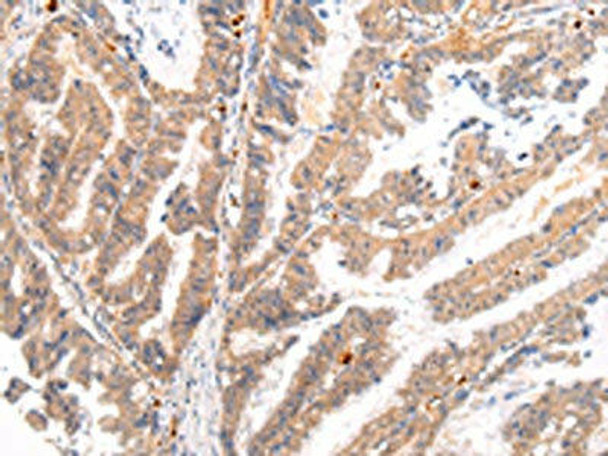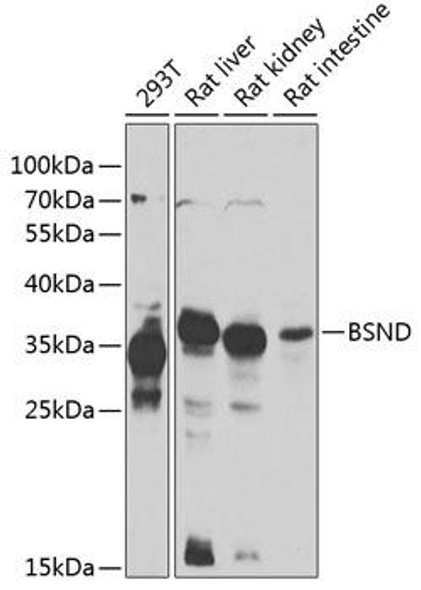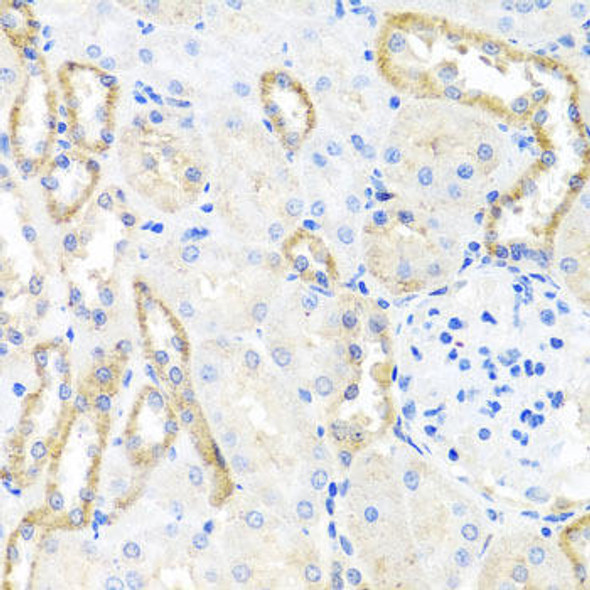BSN Antibody (PACO20963)
- SKU:
- PACO20963
- Product Type:
- Antibody
- Reactivity:
- Human
- Mouse
- Rat
- Host Species:
- Rabbit
- Isotype:
- IgG
- Applications:
- ELISA
- IHC
- Antibody Type:
- Polyclonal Antibody
- Conjugation:
- Unconjugated
Description
BSN Antibody (PACO20963)
The BSN Antibody (PAC020963) is a polyclonal antibody specifically designed for research involving the CD300A protein. CD300A is a cell surface molecule known for its role in immune regulation, particularly in inhibiting immune responses. This antibody, raised in rabbits, is highly reactive with human samples and has been validated for use in Western blot applications. By binding to the CD300A protein, this antibody enables the detection and analysis of CD300A in various cell types, making it an ideal tool for research in immunology and cancer studies.
CD300A, also known as an immune inhibitory receptor, is a key player in immune homeostasis by regulating inflammation and inhibiting allergic reactions. Its importance in modulating immune responses makes it a valuable target for research in diseases such as cancer, autoimmune disorders, and chronic inflammatory conditions. Understanding the function of CD300A is essential for the development of therapies that can utilize or modulate immune function in these disease contexts.
| Antibody Name: | BSN Antibody (PACO20963) |
| Antibody SKU: | PACO20963 |
| Size: | 50ul |
| Host Species: | Rabbit |
| Tested Applications: | ELISA, IHC |
| Recommended Dilutions: | ELISA:1:2000-1:5000, IHC:1:25-1:100 |
| Species Reactivity: | Human, Mouse, Rat |
| Immunogen: | Synthetic peptide of human BSN |
| Form: | Liquid |
| Storage Buffer: | -20°C, pH7.4 PBS, 0.05% NaN3, 40% Glycerol |
| Purification Method: | Antigen affinity purification |
| Clonality: | Polyclonal |
| Isotype: | IgG |
| Conjugate: | Non-conjugated |
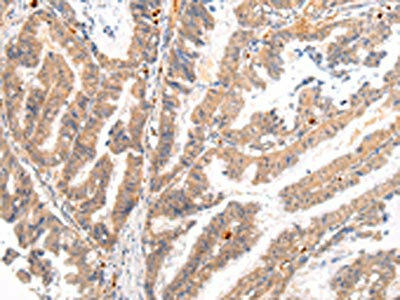 | The image on the left is immunohistochemistry of paraffin-embedded Human esophagus cancer tissue using PACO20963(BSN Antibody) at dilution 1/20, on the right is treated with synthetic peptide. (Original magnification: x200). |
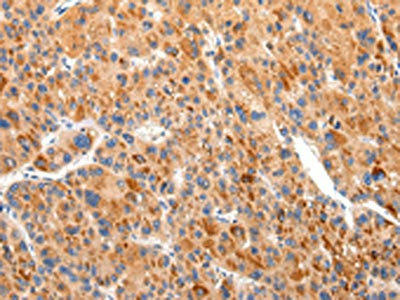 | The image on the left is immunohistochemistry of paraffin-embedded Human liver cancer tissue using PACO20963(BSN Antibody) at dilution 1/20, on the right is treated with synthetic peptide. (Original magnification: x200). |
| Background: | Neurotransmitters are released from a specific site in the axon terminal called the active zone, which is composed of synaptic vesicles and a meshwork of cytoskeleton underlying the plasma membrane. The protein encoded by this gene is thought to be a scaffolding protein involved in organizing the presynaptic cytoskeleton. The gene is expressed primarily in neurons in the brain. A similar gene product in rodents is concentrated in the active zone of axon terminals and tightly associated with cytoskeletal structures, and is essential for regulating neurotransmitter release from a subset of synapses. |
| Synonyms: | bassoon presynaptic cytomatrix protein |
| UniProt Protein Function: | BSN: involved in the organization of the cytomatrix at the nerve terminals active zone (CAZ) which regulates neurotransmitter release. Essential in regulated neurotransmitter release from a subset of brain glutamatergic synapses. Involved in the formation of the retinal photoreceptor ribbon synapses. Interacts with CAST1, RIMS1 and UNC13A. Part of a complex consisting of ERC2, RIMS1 and BSN. Localized to the active zone of presynaptic density. Mice lacking functional BSN showed a reduced excitability attributed to inactivation of a fraction of brain glutamatergic synapses. At these synapses, vesicles are clustered and docked in normal numbers, but are unable to fuse. In retina, mutants lacking functional BSN showed normal retinal anatomy, but synapses lacked anchoring of the photoreceptor ribbon to the presynaptic active zone resulting in impaired photoreceptor synaptic transmission. Two alternatively spliced isoforms have been reported. |
| UniProt Protein Details: | Protein type:Cytoskeletal Chromosomal Location of Human Ortholog: 3p21.31 Cellular Component: axon; cell junction; cell soma; cell surface; dendrite; excitatory synapse; nucleus; presynaptic active zone; trans-Golgi network Molecular Function:metal ion binding Biological Process: synaptic transmission; synaptogenesis |
| NCBI Summary: | Neurotransmitters are released from a specific site in the axon terminal called the active zone, which is composed of synaptic vesicles and a meshwork of cytoskeleton underlying the plasma membrane. The protein encoded by this gene is thought to be a scaffolding protein involved in organizing the presynaptic cytoskeleton. The gene is expressed primarily in neurons in the brain. A similar gene product in rodents is concentrated in the active zone of axon terminals and tightly associated with cytoskeletal structures, and is essential for regulating neurotransmitter release from a subset of synapses. [provided by RefSeq, Jul 2008] |
| UniProt Code: | Q9UPA5 |
| NCBI GenInfo Identifier: | 91208420 |
| NCBI Gene ID: | 8927 |
| NCBI Accession: | NP_003449.2 |
| UniProt Secondary Accession: | Q9UPA5,O43161, Q7LGH3, |
| UniProt Related Accession: | Q9UPA5 |
| Molecular Weight: | 416,469 Da |
| NCBI Full Name: | protein bassoon |
| NCBI Synonym Full Names: | bassoon presynaptic cytomatrix protein |
| NCBI Official Symbol: | BSN |
| NCBI Official Synonym Symbols: | ZNF231 |
| NCBI Protein Information: | protein bassoon |
| UniProt Protein Name: | Protein bassoon |
| UniProt Synonym Protein Names: | Zinc finger protein 231 |
| Protein Family: | Protein bassoon |
| UniProt Gene Name: | BSN |
| UniProt Entry Name: | BSN_HUMAN |

